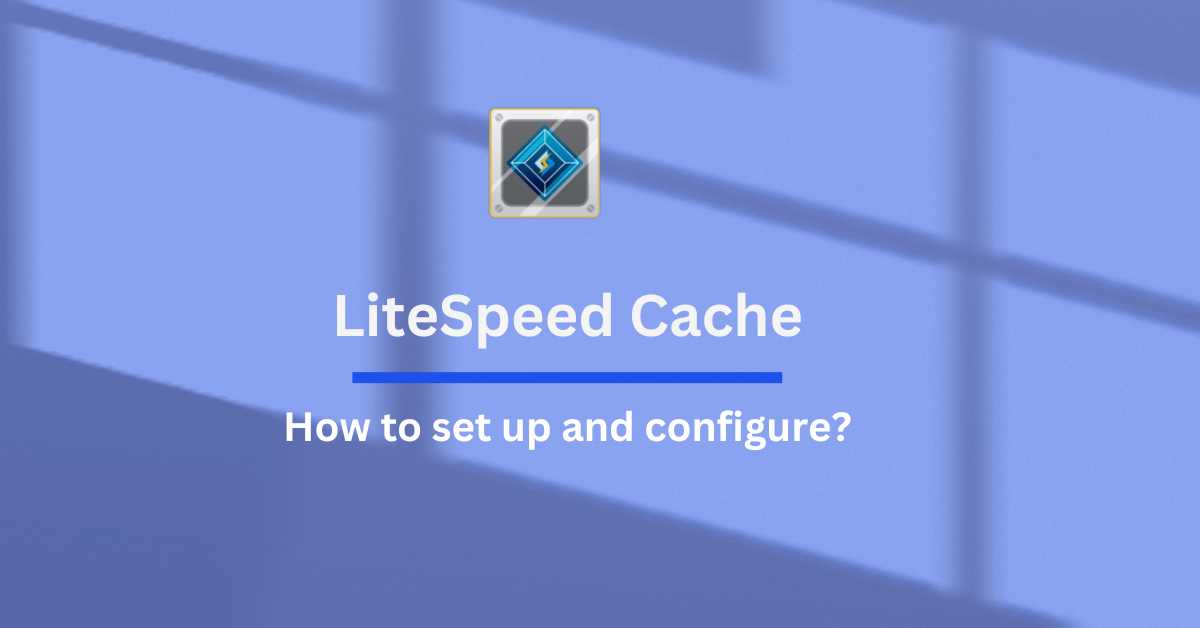Did you know that a one-second delay in page load time can lead to a 7% drop in conversions? In today’s digital world, website speed is crucial for user experience, engagement, and, ultimately, your online success. This guide is for beginners and seasoned webmasters who want to turbocharge their WordPress website’s performance with LiteSpeed Cache, a powerful caching plugin designed specifically for WordPress.
What is LiteSpeed Cache (LSCache)?
LiteSpeed Cache is a high-performance caching plugin developed by LiteSpeed Technologies. It seamlessly integrates with LiteSpeed Web Server, known for its speed, to deliver unparalleled performance and efficiency to your WordPress website.
Step 1: Install LiteSpeed Cache Plugin
Getting started is easy! Here’s how to install LiteSpeed Cache on your WordPress site:
- Log in to your WordPress dashboard.
- Navigate to Plugins > Add New.
- In the search bar, type “LiteSpeed Cache”.
- Find the plugin, click “Install Now,” and then “Activate.”
Step 2: Enable and Configure Basic Settings
After activation, follow these steps to enable LSCache and configure its core settings:
- In your WordPress dashboard, go to LiteSpeed Cache > Cache Settings.
- Toggle the “Cache” option to “Enable”.
- Briefly explore other settings like Cache TTL (how long it takes to store cached data), Cache Storage (location for cached files), and ESI (advanced option for dynamic content).
- Click “Save Changes” to apply your settings.
What is caching? Caching involves temporarily storing website data, allowing it to be retrieved and delivered to visitors much faster than if it needed to be generated each time.
Step 3: Unlock Advanced Optimization
LSCache offers many advanced settings to fine-tune your caching strategy for maximum performance. Here are some key options to consider:
- Optimization: Enable CSS/JS Minification, HTML Minification, and Image Optimization to reduce file sizes and improve load times.
- CDN Integration: If you use a Content Delivery Network (CDN), configure it under the “CDN” tab to serve static assets (images, CSS, JS) from multiple global locations, further reducing load times for visitors worldwide.
- Browser Cache: Instruct visitors’ browsers to store static files locally, reducing the need to download them repeatedly on subsequent visits.
- Object Cache: Store database queries and other objects in memory for faster dynamic content retrieval.
- Database Optimization: Schedule regular cleanups to remove unnecessary data and improve database performance.
Tip: Start with basic settings and gradually enable advanced features as you gain confidence.
Step 4: Test and Monitor Performance
Once you’ve configured LSCache, testing your website’s speed and monitoring its performance over time is essential. Tools like Google PageSpeed Insights, GTmetrix, and Pingdom can provide valuable insights into your site’s loading times and areas for further improvement.
Remember, website speed is an ongoing process. Regularly monitor your metrics and adjust LSCache settings to ensure optimal speed and responsiveness.
Conclusion
By following these steps, you can harness the power of LiteSpeed Cache to improve your WordPress website’s performance significantly. From basic caching to advanced optimization techniques, LSCache offers a comprehensive solution to enhance user experience, boost search engine rankings, and, ultimately, achieve your online goals.
While LSCache is a powerful tool, other popular caching plugins exist for WordPress. Consider exploring options like WP Super Cache or WP Rocket if LSCache doesn’t suit your needs.
